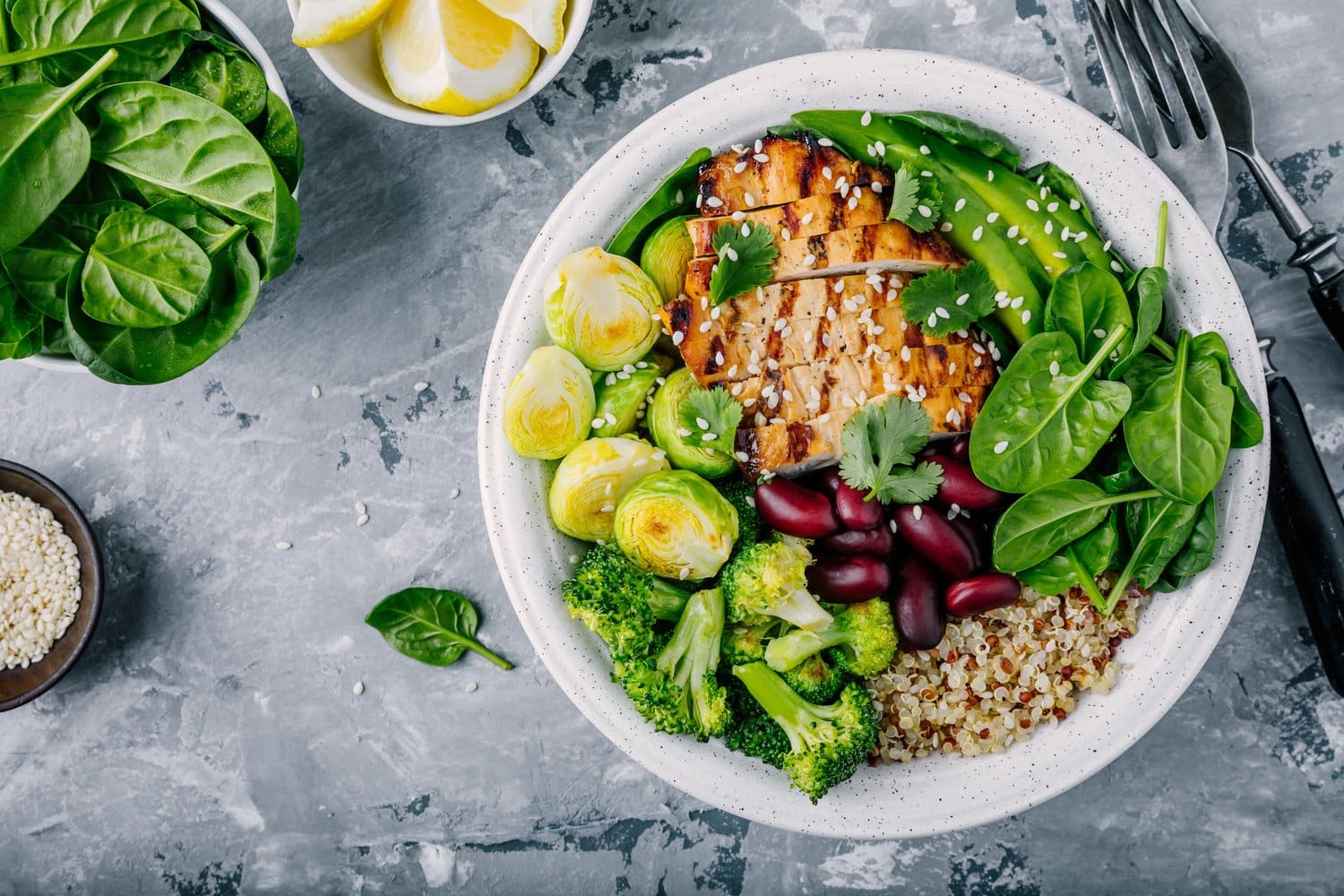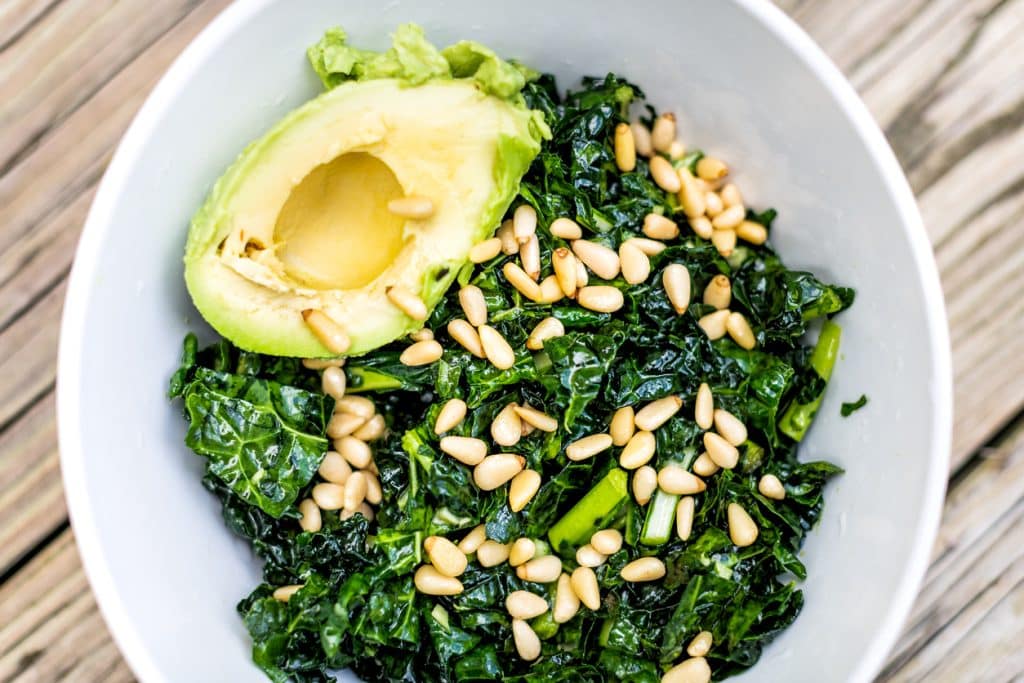It seems simple enough.

Some people say, only eat when you are hungry and just eat until you are satisfied.
But if it were that simple we wouldn’t have the current epidemic of overweight and obesity in our country.
Many of my clients have goals with their weight and body composition that will come down to the nitty-gritty details. If I tell them to just eat until they are satisfied that only causes confusion and frustration.
So how do we know how much we should eat?
First of all, yes, do listen to your hunger signs. And yes, avoid overeating as much as you possibly can.
If you eat slowly and mindfully, even closing your eyes with each bite, you will be able to cue in to how much your body needs in the moment.
This will also help you to avoid overeating and to naturally desire the more nutritious foods.
However, for practical purposes I think it’s always helpful to have an idea of portion sizes.
Most Americans eat WAY too much food so our perception of what is a normal amount of food is mostly skewed.
But let’s not use that as an excuse.
Let’s look at portion sizes for each food group:
Meat/Fish/Poultry
Generally 2-4 oz at any given meal is enough for most women. Some men can do more, up to 5 or 6 oz, and still maintain a good body composition.
3 oz of meat is about the size of a deck of cards. 4 oz is about the size of a regular-sized Iphone.
If you really want to know what 3 oz looks like, get a good food scale and weigh out some meat a few times. You’ll pick it up pretty quickly.
Most restaurants serve disgustingly huge portions of meat so be aware. Most likely you would be fine with 1/2 or even 1/4 of what they serve. If you like a particular dish that you know you’ll probably end up eating in its entirety even though it’s too big, ask the waiter to bag up half of the meal before they serve it. Leftovers for lunch!
I encourage everyone to assess how much meat they are eating and see if they are eating too much. Ideally your plate should be filled to the brim with veggies and there should be a tiny bit of meat there as well (if you eat meat of course).
Most American meals are the opposite; large chunks of meat and tiny garnishes of veggies. I recommend trying to switch this and see how you feel.
Vegetables

1 serving is 1/2 cup. The exception is raw leafy greens, which is 1 cup.
I recommend aiming for at least 5 servings of veggies at each meal. Yes. I know it’s a lot. Go for it anyway.
When you eat that many veggies it tends to crowd out the less nutritious and more damaging foods like 12 oz steaks and baskets of french fries.
Fruit
1 serving is either 1/2 cup OR 1 medium sized whole fruit. Go for the 1/2 cup target. One medium-sized banana is more than 1/2 cup so if you go for the whole fruit you will probably end up eating more fruit than you should.
How much fruit you need is really individual and of course it depends on the fruit.
But I would aim for 0-1 serving of regular sweet fruit per day MAX for the average healthy person. PLUS 2-3 servings of berries, avocado, coconut, olives, cucumber, squash, or tomatoes (these are all fruits).
Eggs
1 egg is 1 serving.
If you like eggs and you can eat them (and you don’t have familial hypercholesterolemia), try 1-3 eggs per day.
FYI, eggs are rich in choline, an important brain and liver nutrient that is somewhat hard to find in the diet.
Nuts & Seeds
Nuts and seeds are amazing foods, rich in all three major macronutrients; fiber, fat, and protein.
But don’t overdo it. These guys pack a good caloric punch.
As long as you tolerate them well, I would generally recommend 1-2 servings of seeds and 1 serving of nuts per day max.
Be careful of those nut butters!! You could easily find yourself downing 6 or more servings of nuts in one sitting. That is not only a LOT of food, it’s pretty demanding on your digestion.
Serving sizes vary for each nut and seed.
Below is a list of serving sizes for the most common ones.

NUTS (1 serving)
Almonds, 22 count
Brazil, 6 count
Cashews, 15 count
Chestnuts, 6 count
Hazelnut, 20 count
Macadamia, 10-12 count
Pecan, 18 count
Pistachio, 49 count
Walnut, 7 count
SEEDS (1 serving)
Pine Nut, 1 tbsp. (1/2 of an ounce)
Chia, 1 tbsp.
Flax, 1 tbsp. (ground)
Hemp, 1 tbsp
Pumpkin, 1 tbsp
Sesame, 1 tbsp
Sunflower, 1 tbsp
Poppy, 1 tbsp
PS: peanuts are not nuts, they are legumes.
Legumes
There is no requirement for you to eat legumes.
But beans and some other legumes (peas of all kinds and lentils) are excellent sources of fiber, folate, and other nutrients. So, if you tolerate them, I do recommend incorporating them into your daily routine.
If you are going to eat these foods I recommend 1/2 cup per day.
Some people eat more and that is probably fine. Just be on the lookout for any extra gas or bloating with beans, peas, or lentils. If that happens I suggest you look into whether or not you have SIBO.
Whole Grains
Just like legumes (and counter to what the USDA tells you), there is no requirement to eat grains.
If you are going to eat grains, make them whole and unrefined. Otherwise, the serving recommendation for refined and processed grains is a big fat ZERO.
1 serving of whole grains is 1/2 cup, cooked.
Next time you eat rice or oatmeal, measure it out and see. 1/2 cup looks tiny compared to what most people eat. Nevertheless, that is a serving size.
Dairy
One could argue that there is really no absolute need to consume dairy either.
Most of the dairy products that we get in stores these days are highly processed food-products under the guise of wholesome food.
However, for those of you that want to eat some dairy I can give you some general guidelines on how much is a human-sized portion.
Cheese is probably the one dairy food that my clients say is the most difficult to give up. And with good reason. Cheese is tasty and so versatile.
If you are eating cheese I advise sticking to the less processed versions.
So instead of eating a “cheese product” like sliced singles, how about eating a raw, artisanal cheese made locally by a small farm? That would be much better.
Generally, an ounce and a half of cheese is one serving. One way to visualize this is to think of 4 dice being the equivalent to one serving.
For milk and yogurt a serving size is 1 cup.
The USDA says we should have 3 servings of dairy per day. I would say all else being equal that is a lot of dairy and we really don’t need to eat that much, if any at all.
Pay attention to how you feel. If you find you feel better without dairy, respect that sign from your body.
So that’s a basic overview of how much to eat. Of course, of course, of course, there are many exceptions to the above guidelines and we really need to pay attention to our bodies to figure out what feels right.
Now that you know what a serving size is, you might want to start with the “less is more” attitude and see how you feel when you eat a little less food than you normally do.
Either way, intuitive and mindful eating is the goal.
